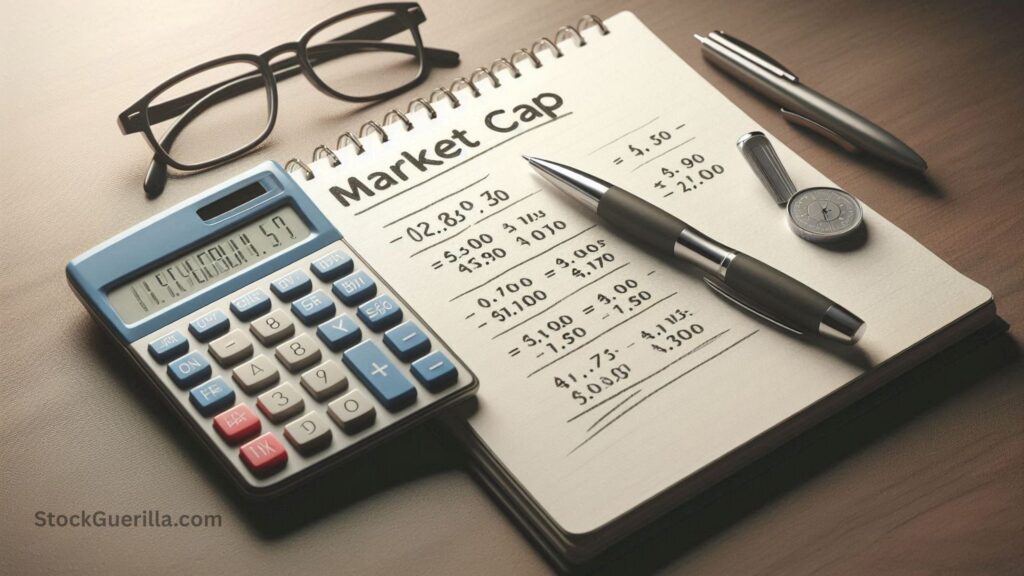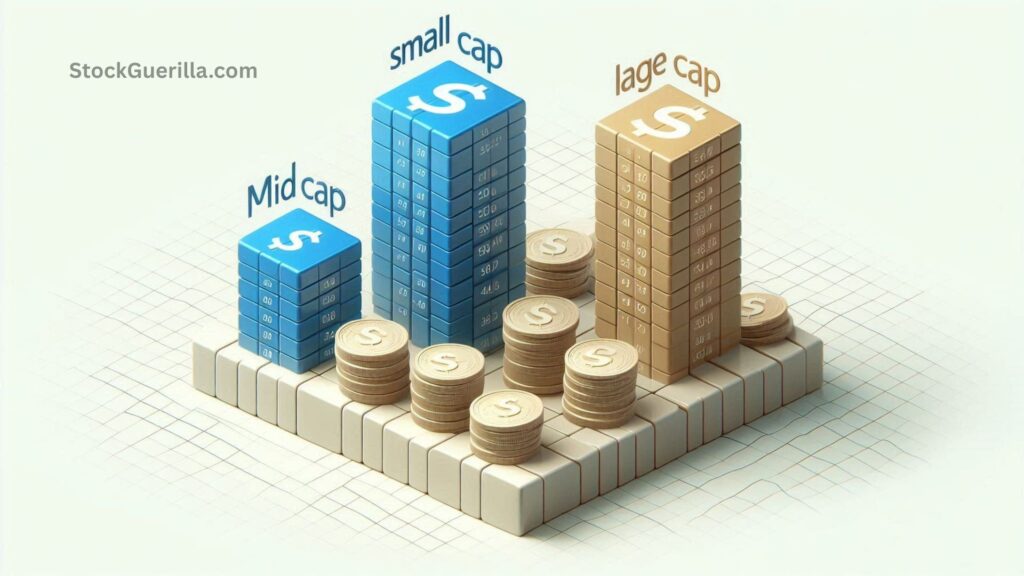What is Market Capitalization and Why does it matter?
Market capitalisation—or market cap for short—is simply the total value of a company’s shares in the stock market. You calculate it by multiplying the current share price by the number of shares the company has issued.
Think of it like this: market cap gives you a quick snapshot of a company’s size and how much investors think it’s worth.
Market Cap Formula (It’s Really Simple)

Market Cap = Current Stock Price × Total Outstanding Shares
Let’s say a company’s share is priced at ₹500 and it has 10 lakh shares—its market cap would be ₹50 crore.
Why Market Cap Matters
Market cap is more than just a number—it’s a helpful tool investors use to:
- Compare Company Size: Whether you’re looking at a tech giant or a small startup, market cap makes it easier to see where a company stands.
- Build the Right Investment Mix: Investors use market cap to pick a mix of large-cap, mid-cap, and small-cap stocks based on their risk level.
- Track Index Impact: Companies with big market caps have more influence on stock indices like the Nifty or Sensex.
- Spot Opportunities: Comparing market caps in the same industry can reveal which companies are strong or undervalued.
Types of Market Cap (And What They Mean)

✅ Large-Cap Stocks
These are the big players—well-established, financially stable, and lower risk. But growth is usually slower.
✅ Mid-Cap Stocks
A good middle ground. These companies are growing fast and might offer better returns than large-caps, with a bit more risk.
✅ Small-Cap Stocks
These are smaller, often newer companies. They can grow quickly but are also riskier. High risk, high reward.
Your pick depends on your investment style:
- Want safety? Go with large-cap.
- Looking for balance? Try mid-cap.
- Hungry for growth? Small-cap could be for you.

Also Read: What are the Top Passive Income Ideas for 2025?
Key Ratios That Help You Dig Deeper
Market cap gives you a starting point. But to really understand a company’s value, investors often use these ratios:
- P/E Ratio: Market Cap ÷ Net Income (helps gauge value vs. earnings)
- Price-to-Free-Cash-Flow: Market Cap ÷ Free Cash Flow (shows how efficiently a company generates cash)
- Price-to-Book: Market Cap ÷ Book Value (compares market value with actual company assets)
- EV/EBITDA: Includes debt and cash in the calculation and shows profitability from operations
What Is Free-Float Market Cap?

Free-float market cap only counts shares that are available for public trading. It excludes shares held by promoters or company insiders. This method gives a clearer picture of what the market can actually trade.
Most stock exchanges today use this method for creating market indices.
Limitations of Market Cap
While market cap is useful, it has its downsides:
- Doesn’t Show Financial Health: Two companies might have the same market cap but very different debt levels and profits.
- Short-Term Swings: Prices change fast, so market cap can go up or down in a day.
- Misses Non-Traded Assets: It doesn’t include valuable things like patents or private holdings.
- Hard to Compare Across Sectors: A bank and a tech startup have different business models—market cap doesn’t show that.
- Not a Valuation Tool on Its Own: It doesn’t say if a stock is overpriced or a bargain.
- Affected by Stock Buybacks or Splits: These change the number of shares and can shift market cap.
- Might Overlook Growth Potential: Smaller companies with huge potential might get ignored if investors focus only on big market caps.
What Affects Market Cap?
Several things can move a company’s market cap:
- Stock Price Changes
- New Shares Issued or Buybacks
- Earnings and Profit Announcements
- Market Sentiment (News, Economy, etc.)

Also Read: How does Growth Investing Differ from Value Investing?
Other Ways to Measure a Company’s Value
Market cap is just one tool. Here are other methods investors use to value a business:

1. Fundamental Analysis
Look into the company’s balance sheet, income statement, and cash flow. Check how much money it’s making, how much debt it has, and whether it’s growing.
2. Relative Valuation
Compare a company’s ratios (like P/E or P/B) to competitors. If a company has a lower P/E than its rivals, it might be undervalued.
3. Discounted Cash Flow (DCF)
Estimate how much cash the company will make in the future and convert that into today’s value. Great for long-term investors.
4. Comparable Company Analysis (CCA)
Match the company with similar businesses and see how it stacks up based on key financials.
5. Qualitative Factors
Don’t ignore management quality, industry trends, brand reputation, and regulation. These “soft” factors often matter just as much.
Market Cap vs. Shareholders’ Equity
Here’s how the two differ:
| Aspect | Market Capitalisation | Shareholders’ Equity |
|---|---|---|
| What it means | Market’s valuation of a company | Company’s net worth (assets – liabilities) |
| Driven by | Stock price and investor sentiment | Company’s books and accounting |
| Usage | For comparing size or grouping stocks | For checking financial health |
| Includes debts? | No | Yes |
| Changes often? | Yes, with market price | Not frequently |
| Perspective | Forward-looking | Historical snapshot |
Market Cap vs. Enterprise Value (EV)
Market cap looks at just the equity side of things. But Enterprise Value (EV) gives the full picture—it includes debt, preferred shares, and subtracts cash.
EV = Market Cap + Debt + Preferred Shares – Cash
So while market cap tells you how much the market thinks a company is worth, EV tells you what it would cost to buy the entire business.

Also Read: How to Set Up Alerts for Stock Price Movements?
Final Thoughts
Market capitalisation is a handy way to understand a company’s size and market value. But remember—it’s just one piece of the puzzle.
To really know whether a stock is worth investing in, look beyond the surface. Use other valuation methods, check the company’s financial health, and consider both the numbers and the story behind them.




Post Comment